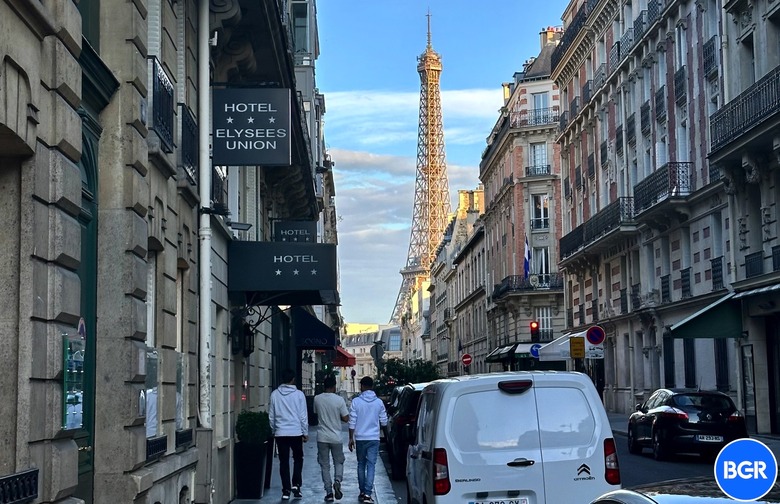How An iPhone Can Help You Navigate Paris Public Transit During The Olympics
I arrived in Paris, France, for Samsung's big Unpacked event a few days ago, fully prepared to use public transit to navigate the city to the various places I needed to be. This wasn't my first time in Paris. I know where all the important stuff is and how easy it is to get around using public transportion, especially the metro.
What changed since my last time here is how you purchase public transportion tickets in Paris. You no longer have to use ticket machines (though they still exist) if you have an iPhone or Android phone. Just load the right app and start adding tickets to your smartphone. You'll then be able to simply tap your phone near a turnstile reader on the metro or a standard NFC reader in a bus or tram to scan your pass.
The new feature was made available just in time for this summer's big sporting event. If you're traveling to Paris for the 2024 Summer Olympic Games in the coming weeks, you should expect big crowds everywhere. Many people will want to use public transit to get around. The ability to use an iPhone or Android device to quickly buy and scan tickets will be invaluable.
In what follows, I'll show you how easy it is to set this up on your iPhone and Apple Watch.
Coming to Paris, I remembered that Apple had announced the new iPhone functionality for the city. The company partnered with Île-de-France Mobilités to add Navigo cards and tickets to Apple Wallet on the iPhone and Apple Watch. The service is relatively new, having started in mid-May.
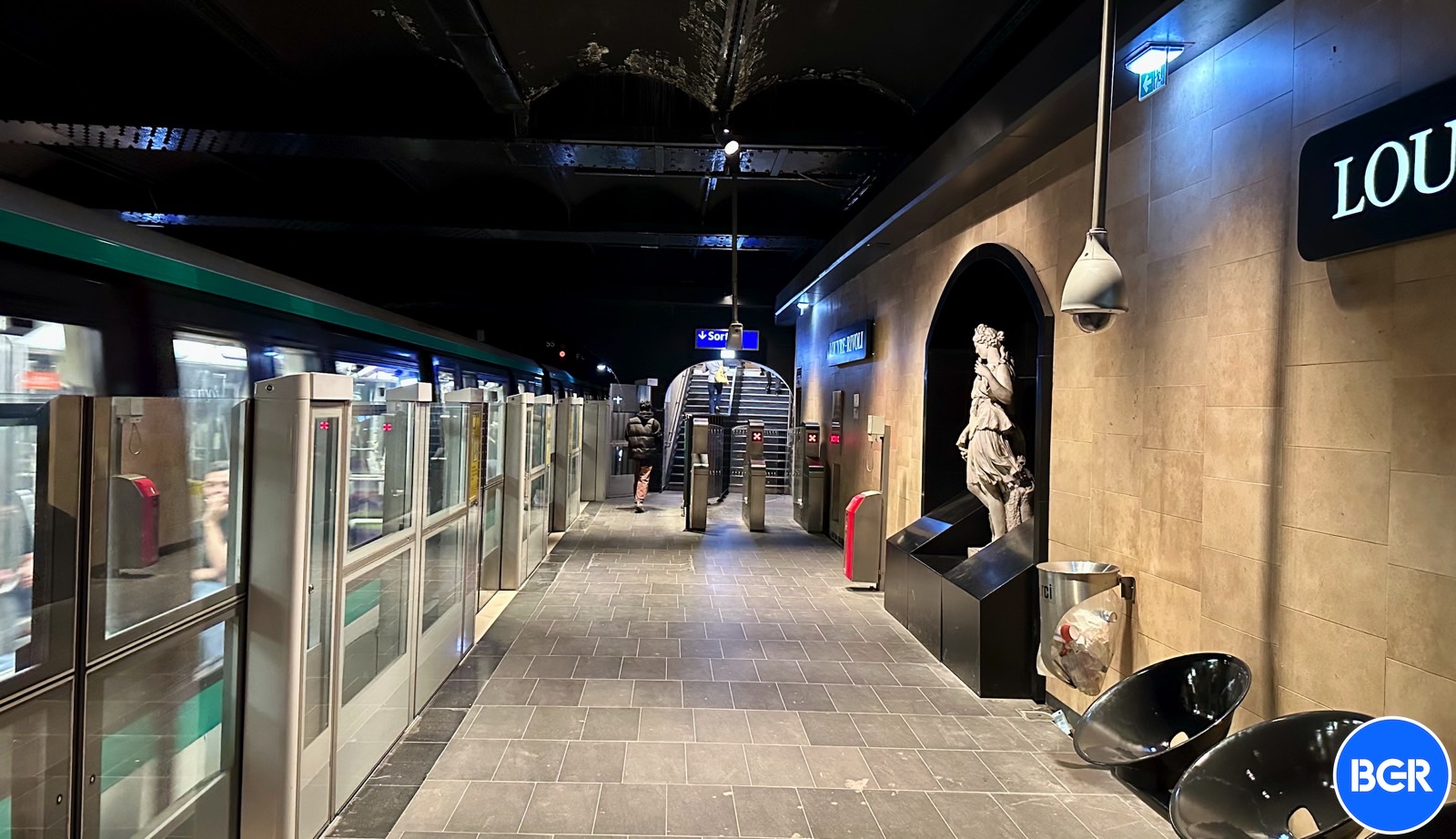
The first thing I did was download the mobile app on my iPhone. Then, I made my first purchase, a pack of "t+" tickets that would give me access to the metro and other public transport.
I used Apple Pay to purchase the tickets. Then, the app asked me whether I wanted to add the new tickets to Apple Wallet. I said yes, and that was it. After a few seconds of processing the request, I had a new card in my Apple Wallet for Île-de-France Mobilités transports.
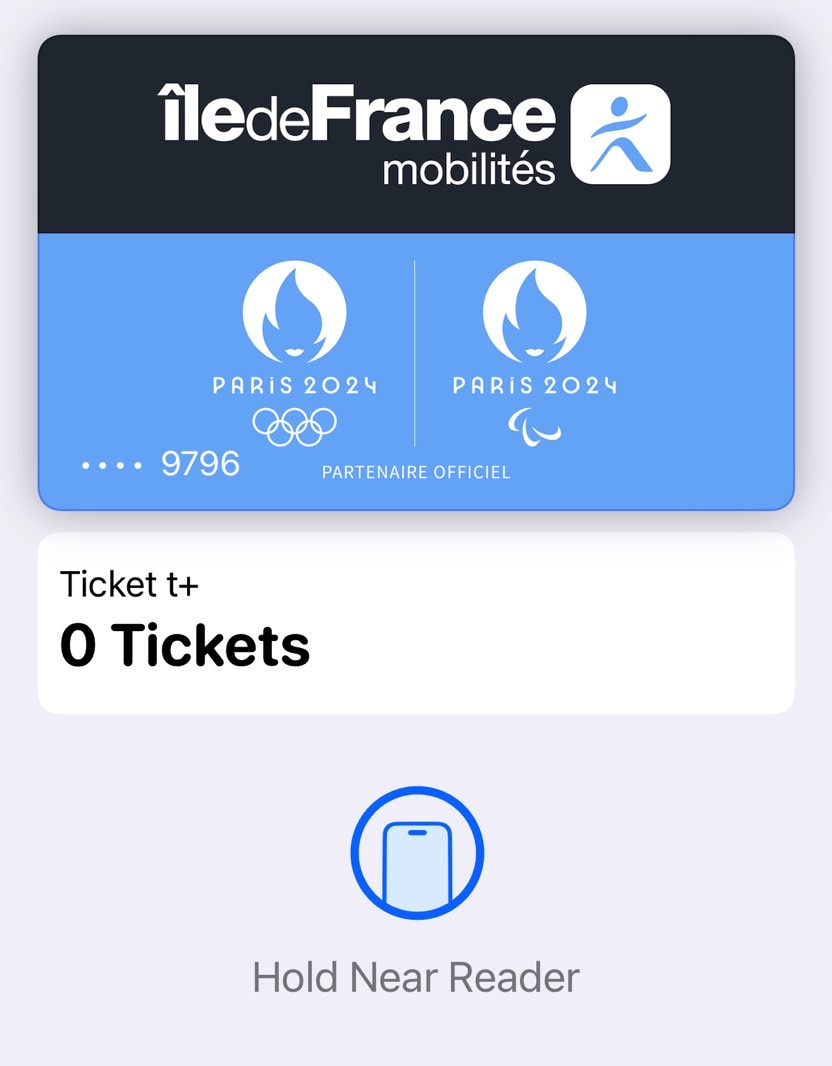
You can add all sorts of Navigo Card and pass options to Apple Wallet, including specific ones created for the Paris Olympics. You'll also find passes for Paris airports, which is how most people will travel to Paris this summer.
I then went on my way, taking the iPhone out at every turnstile, invoking Apple Wallet with a double press of the standby button, picking the Paris card, and scanning it at the reader. Boy, was that stupid.
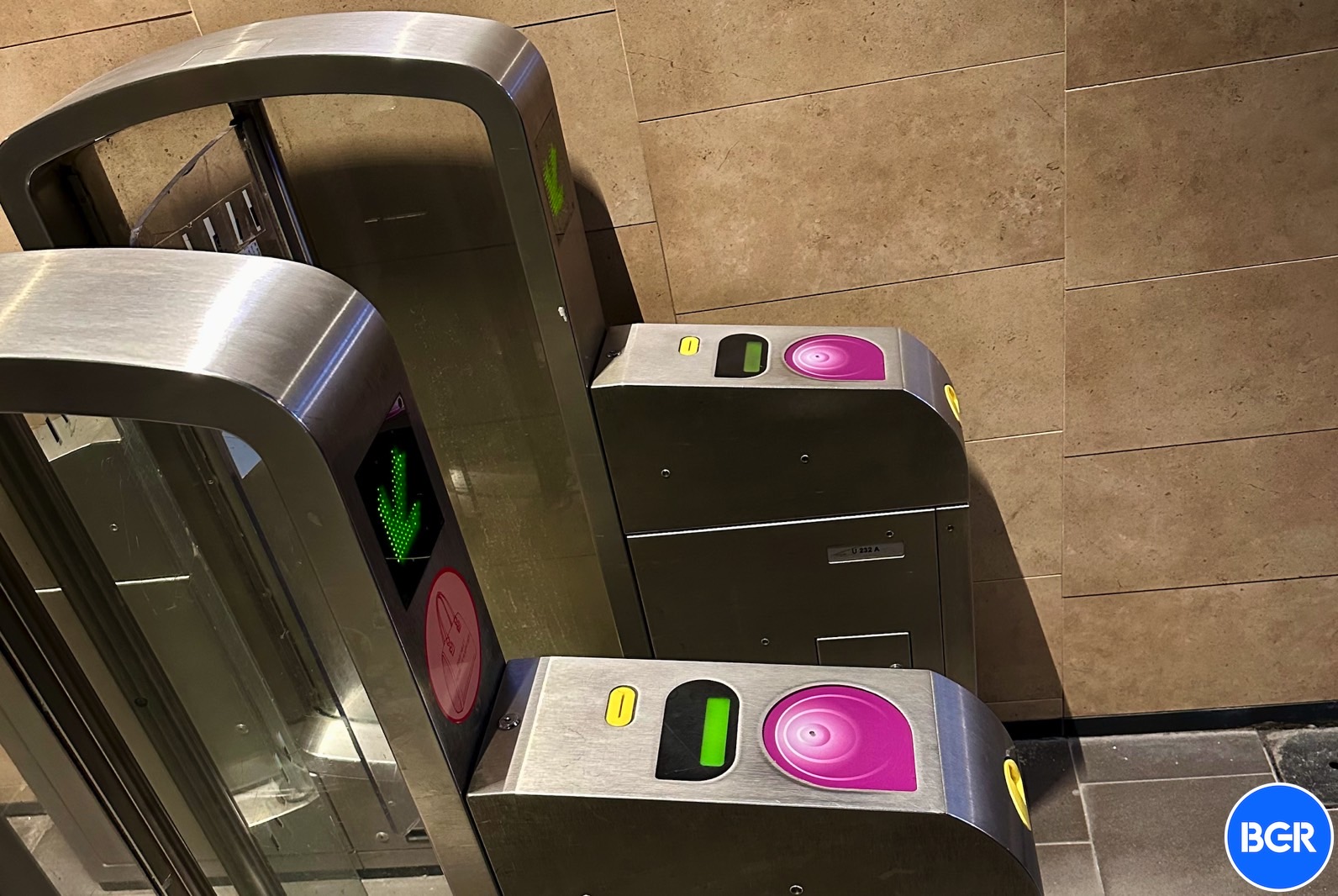
After a few scans, I realized you don't have to turn on the iPhone. You don't have to bring up Apple Wallet and look for the right card. Just touch the iPhone against the purple reader, and it'll scan your ticket. It'll also tell you how many tickets you have left.
I could have added the t+ pass to Apple Watch, but I didn't. The NFC readers are usually on the right side in metro stations, and I wear the Watch on my left hand. However, the system supports Apple Watch as well.
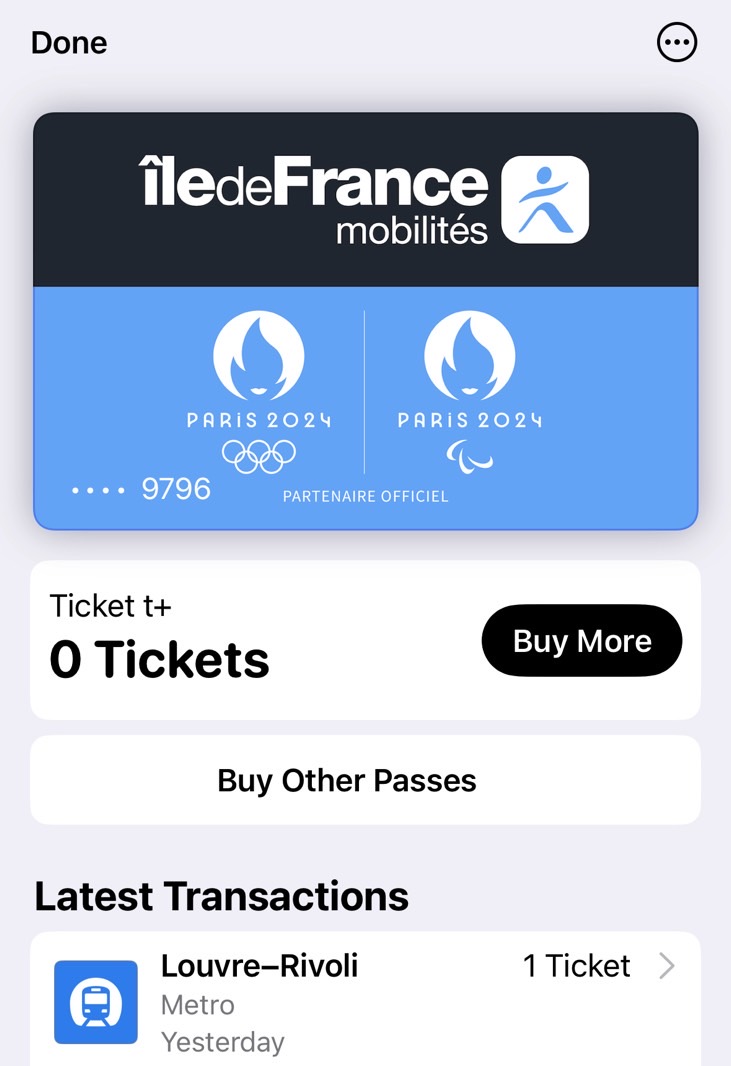
But wait, it gets even better. Now that I have depleted the initial 10-ticket pass, I can purchase more tickets directly from Apple Wallet. I can also do it from the Île-de-France Mobilités app, too, and the tickets will appear in Apple Wallet.
Speaking of scanning your tickets, ensure you do it every time you enter the metro or use public transportation. I encountered controls more than once. They look at your physical tickets and scan your iPhone to check that your ticket is still valid. Those checks do not consume credit, and you'll see them in your transaction history in Apple Wallet.
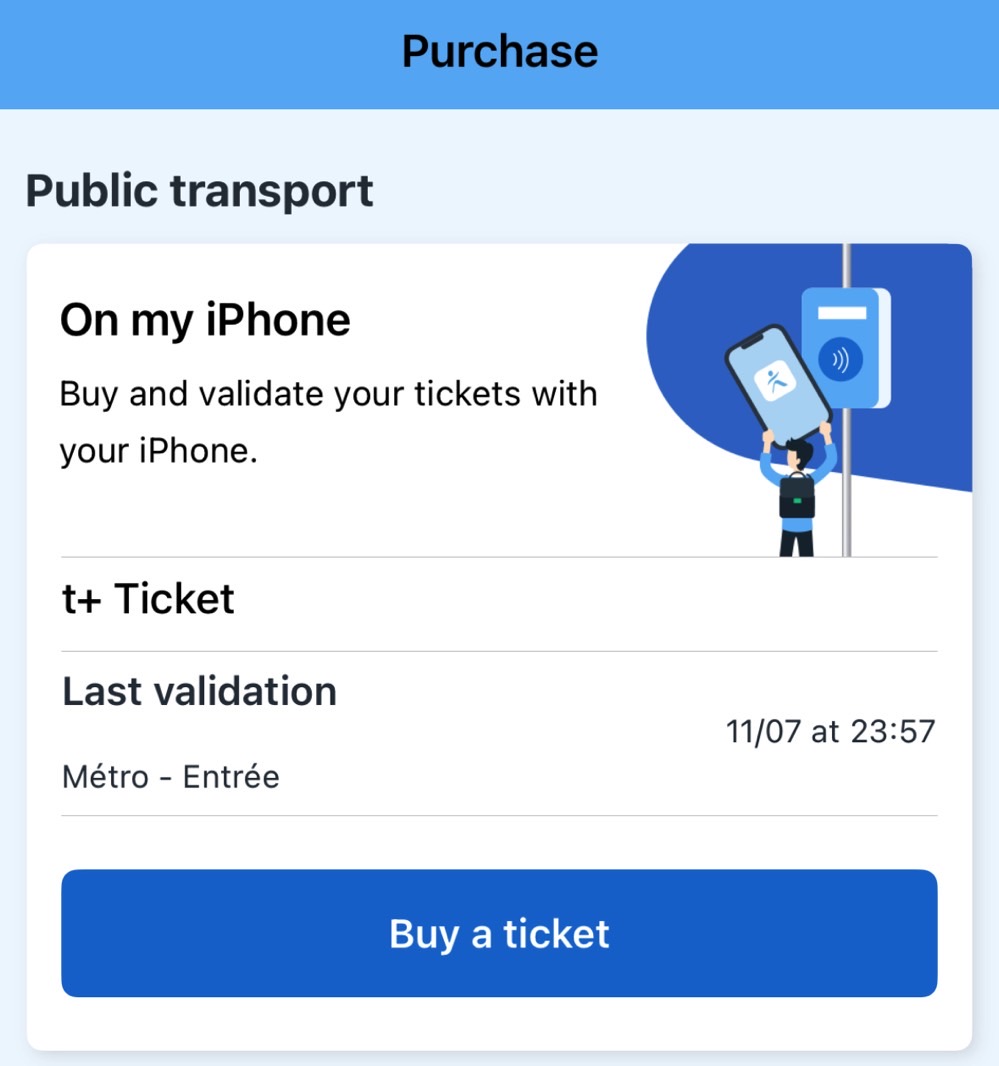
Since it's all saved in Apple Wallet, your data is secure and encrypted. Nobody has access to your transit history, but you can see it in the app.
The same process applies to Android phones that have NFC chips. Most phones these days do. I focused on the iPhone because that's the device I used to manage my travel in and around Paris.
I'll also say that if you're a Parisian or plan to spend more time in the French capital, you can add your existing physical Navigo card to Apple Wallet. The process is similar to what I described above.
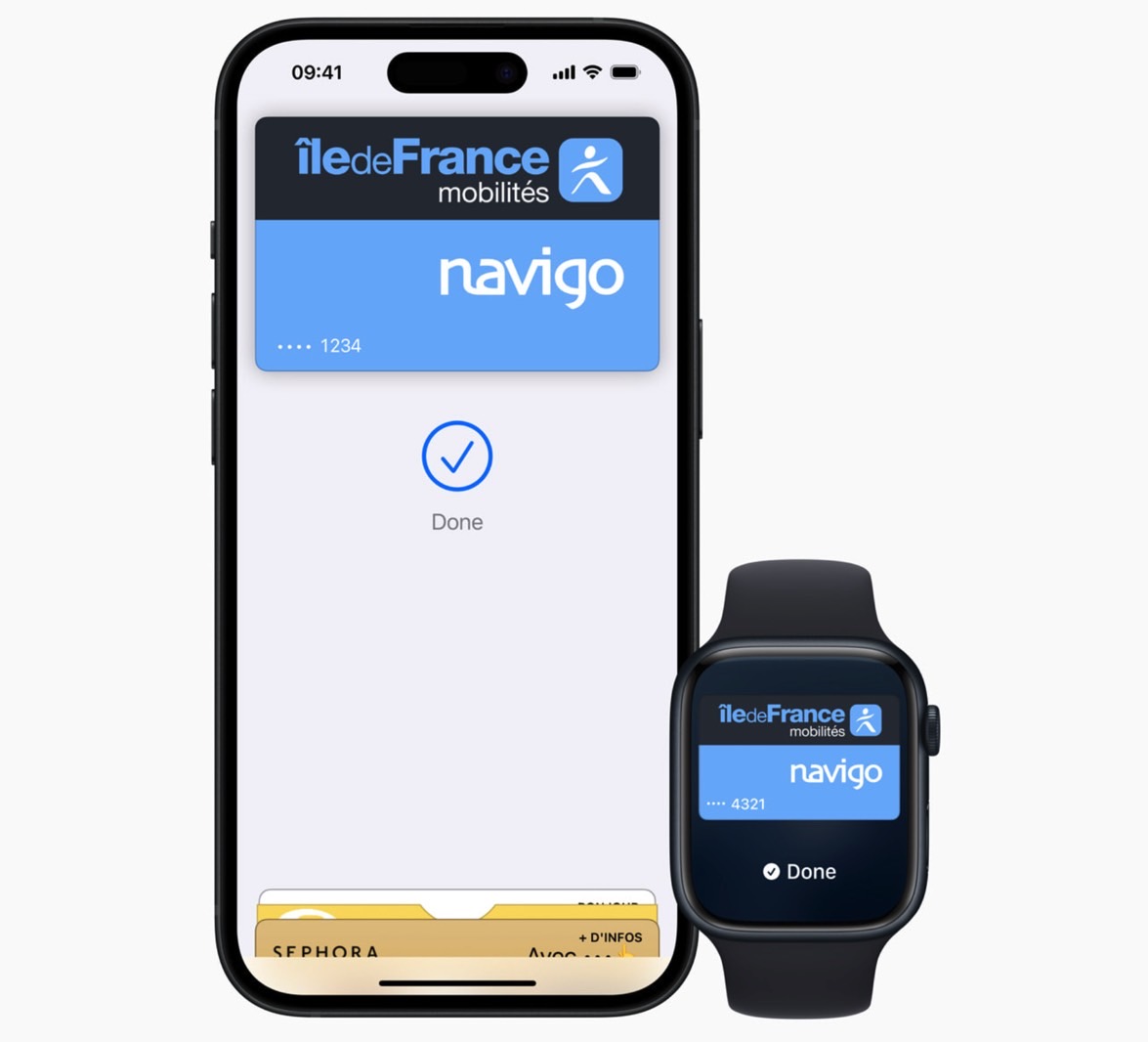
There is one issue in all of this. If you travel with a group of family and friends for the Paris Olympics, each member will have to get their own tickets on their phone. You won't be able to scan your handset more than once. If you need to manage a group of multiple people, kids included, then you might be better served by standard physical cards and tickets available from machines.
